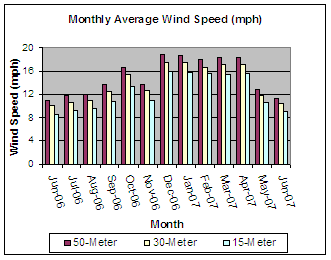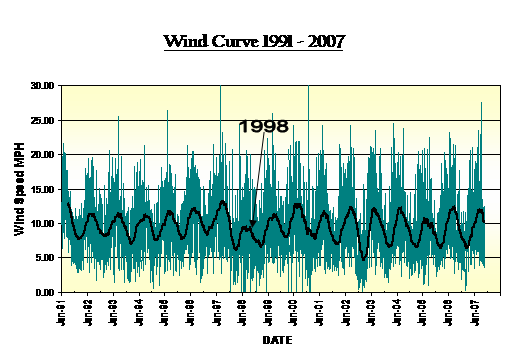
INSTITUTE FOR ENERGY
Institute for Energy Research
INTRODUCTION
Experts in the Field of Energy Research
The staff and faculty of the Institute for Energy are experts in the energy field. We understand the true issues that face energy development in the Commonwealth and use our knowledge to pursue research that has the ability to create essential policy framework to ensure the energy industry continues to thrive. Our research projects include:
Pennsylvania Clean Energy Survey
A survey of institutions of higher education, business development centers, and other organizations to provide a snapshot of the current clean energy market and provide a hint of what may occur in the future.
Read the Report.pdf

Energy Development on Pennsylvania’s Public Lands
A comprehensive review of energy development on Pennsylvania's Public Lands
View Summary & Interactive Map
Read the Report.pdf

Current and Future Research Projects:
- Wind data analysis using industry software and data collected using meteorological equipment
- Wind energy development issues
- Minimizing environmental impacts of energy development
- Energy development on public lands
- Deployment of solar technologies
- Historical use of energy sources in the state
- Energy storage and sustainable transportation applications
- Increasing sustainability initiatives at SFU and in the community
Please contact us at energy@francis.edu with any other research inquiries or interest in collaborating with us.
Past Research Projects:
The Institute has sponsored research by faculty and students from business, sociology, history, communications, engineering, biology, computer science, math, and more. A sampling of projects are listed below.
-
Faculty advisor John Lamertina and students Alex Yeisley and Tim Gaborek took eight weeks in the summer of 2007 to write a computer program, called BREEZE, that automates wind data analysis taking raw data, analyzing it for errors, and producing easily understandable graphs and tables—at the stroke of a button. They worked closely with professional meteorologist Ed McCarthy of Wectec, Inc., a California-based firm specializing in meteorological analysis services. The graphs they produce, such as the one shown of Mean Average Wind Speed at 3 Different Heights, are identical to those produced by Mr. McCarthy.

-
The Anemometer Loan Program gathers data for typically a 12-month period of time. Gathering data for only a year produces a question: How does this year compare to other years for wind at or near the proposed site? Was it a good year, a bad year or an average year? Without a historical context, the program has no way of validating the accuracy of the data. The purpose of this project by Dr. John Harris and Kurt Hoffman was to develop a baseline historical wind comparison platform such that present and future ALP sites can have greater confidence in their wind assessment. The project analyzed archived wind data for a comparative regional airport, Johnstown Regional Airport, as a validation and correlation measure for collected wind data.
Results: The Case of 1998

The University now has a database for Johnstown Regional Airport that monitors wind speed, direction and temperature which is being used to validate the wind data collected and analyzed by the ALP. One client whose site demonstrated a poor wind resource has already asked the question answered by this research: “How do you know if it wasn’t just a bad year?” We now have a very good answer to that question.
An example of the importance of their work is illustrated in the graph above that shows that 1998 was an anomalous year. In the 10 year test of 1998, the mean wind speed from 1998 was 16% lower than the Mean Wind Speed over the 10 year period. Because wind speed translates into power for a wind turbine, this 16% is a significant difference. Wind speed is cubed in order to determine power output. Hypothetically speaking, a site that normally has a mean wind speed of 20 MPH would have data collected in an anomaly year of 16.8 MPH, a 16% difference. This is a 41% drop in power output over that anomaly year. So a 16% reduction in wind speed is approximately a 40% reduction in power!
In short, wind speed matters and knowing whether the wind speed is congruent with historic trends validates the resource and adds value to the service the CWP provides. Further work with historic wind data from airports in Northeast and Northwest Pennsylvania is needed to validate data collected in those wind areas.
Avian and Environmental Risk Assessment
Literature Review for the Community Wind Energy Research Project
History of Wind Power in PA
Additional Projects Have Included:
-
-
The purpose of this research was to identify and monitor bird activity at two potential community wind farm sites in Cambria County, Pennsylvania. After two months of studying the birds at these sites, 42 bird species were observed at one site and 29 species at the other. All of the species at both sites were determined to be breeding or potentially breeding.
None of these species were listed as federally or state threatened or endangered. However, there were five species of conservational interest and two species of regional rarity found at one site, and two conservation interest and one regional rarity species found at the other. Additionally, five species on Audubon’s 2007 “List of the Top 20 Birds With the Greatest Population Decline Since 1967” were found at both sites.
View a sample report
Objectives
Two local farms in Cambria County, Pennsylvania have been identified by the Saint Francis University Renewable Energy Center’s ALP as potentially viable for wind energy development. The overall environmental risks at these sites have not yet been investigated, so the purpose of our study was to complete an assessment of avian use—what bird species inhabit the sites, when they are present, and how they are using the site (e.g., nesting, migrating, foraging). This will help the landowners and developers to understand any drawbacks to constructing a community-scale wind project on their farm. The data collected will also provide a better understanding of the potential effects a wind farm could have on certain bird species at a site—for example, displacement of bird species from their breeding grounds.
Methodology
The methodology was developed in consultation with Richard Curry of Curry & Kerlinger, a firm specializing in avian assessments for the wind energy industry. Also utilized was the Pennsylvania Game Commission’s Voluntary Agreement for Wind Energy Developer.
The study took place on two local farms in Cambria County, PA during the months of May and June 2007. Our sampling times ranged from early morning to late at night. This was done to get a well-rounded data set for all times of the day. Each site was assessed prior to the initial study to determine how the site would be divided into sub-sites. The first site, the larger of the two was divided into seven sub-sites. They ranged from open grassland and farmland to wooded areas and aquatic habitats (a stream and two ponds). The second site was divided up into five different sub-sites. Four of them were in open farm fields by the meteorological tower, and one was located in the woods west of the tower.
On each sampling day, an “area-search” method was used to study the site. For this method, we spent 30 minutes at each sub-site identifying and studying as many birds as we could during that time period. The observer then rotated to a new site. The order of sub-site visited was varied to account for the time of day and the number of observers. We also noted any nests that were found at the sites. Bird species were determined to be breeding if they exhibited any of the behaviors used by biologists to establish avian breeding status for the Second Pennsylvania Breeding Bird Atlas.
-
The purpose of this literature review project was to identify the major social, economic, policy, and environmental issues in renewable energy with a concentration on community acceptance of wind energy initiatives. The project, conducted by Dr. Lening Zhang and Dr. Teelyn Mauney of the The Rural Center for Applied Social, Health and Behavioral Research, involved conducting a systematic search and review of publications in professional journals to provide a comprehensive summary of the issues. A study of 320 journal articles indicated that professional publications on renewable energy, particularly in wind energy, have increased significantly. These articles have addressed a wide range of policy, economic, social, and environmental issues. Although a large number of the articles have concentrated on policy and economic issues in renewable energy, the number of professional publications on social issues, especially on social issues involving wind energy has been rising since 2000.
-
The use of wind power in Pennsylvania was actually relatively common in the late 1800s and early 1900s, as electricity lines did not yet extend to rural areas. A student interviewed individuals who remembered wind power.
-
- an assessment of rooftop wind turbines
- a case study describing the installation of a geothermal heat pump system at the university's DiSepio Institute for Rural Health and Wellness
- a study comparing sound levels of different items to a wind turbine
- a study to determine the environmental attitudes of Christians in Western Pennsylvania
- an avian assessment at a potential wind site in Somerset County
- an assessment of the potential solar electricity production at the university
- a comparison of Brazilian and California electricity markets
- an analysis of the technical and social factors related to wind energy development in Erie County, Pennsylvania
- development of generator and transformer curriculum
- a project to design a tiny classroom/office space
- a study to compare air quality in a room without, and then with, a 'living wall'
Faculty advisor John Lamertina and students Alex Yeisley and Tim Gaborek took eight weeks in the summer of 2007 to write a computer program, called BREEZE, that automates wind data analysis taking raw data, analyzing it for errors, and producing easily understandable graphs and tables—at the stroke of a button. They worked closely with professional meteorologist Ed McCarthy of Wectec, Inc., a California-based firm specializing in meteorological analysis services. The graphs they produce, such as the one shown of Mean Average Wind Speed at 3 Different Heights, are identical to those produced by Mr. McCarthy.

The Anemometer Loan Program gathers data for typically a 12-month period of time. Gathering data for only a year produces a question: How does this year compare to other years for wind at or near the proposed site? Was it a good year, a bad year or an average year? Without a historical context, the program has no way of validating the accuracy of the data. The purpose of this project by Dr. John Harris and Kurt Hoffman was to develop a baseline historical wind comparison platform such that present and future ALP sites can have greater confidence in their wind assessment. The project analyzed archived wind data for a comparative regional airport, Johnstown Regional Airport, as a validation and correlation measure for collected wind data.
Results: The Case of 1998

The University now has a database for Johnstown Regional Airport that monitors wind speed, direction and temperature which is being used to validate the wind data collected and analyzed by the ALP. One client whose site demonstrated a poor wind resource has already asked the question answered by this research: “How do you know if it wasn’t just a bad year?” We now have a very good answer to that question.
An example of the importance of their work is illustrated in the graph above that shows that 1998 was an anomalous year. In the 10 year test of 1998, the mean wind speed from 1998 was 16% lower than the Mean Wind Speed over the 10 year period. Because wind speed translates into power for a wind turbine, this 16% is a significant difference. Wind speed is cubed in order to determine power output. Hypothetically speaking, a site that normally has a mean wind speed of 20 MPH would have data collected in an anomaly year of 16.8 MPH, a 16% difference. This is a 41% drop in power output over that anomaly year. So a 16% reduction in wind speed is approximately a 40% reduction in power!
In short, wind speed matters and knowing whether the wind speed is congruent with historic trends validates the resource and adds value to the service the CWP provides. Further work with historic wind data from airports in Northeast and Northwest Pennsylvania is needed to validate data collected in those wind areas.
Avian and Environmental Risk Assessment
Literature Review for the Community Wind Energy Research Project
History of Wind Power in PA
Additional Projects Have Included:
The purpose of this research was to identify and monitor bird activity at two potential community wind farm sites in Cambria County, Pennsylvania. After two months of studying the birds at these sites, 42 bird species were observed at one site and 29 species at the other. All of the species at both sites were determined to be breeding or potentially breeding.
None of these species were listed as federally or state threatened or endangered. However, there were five species of conservational interest and two species of regional rarity found at one site, and two conservation interest and one regional rarity species found at the other. Additionally, five species on Audubon’s 2007 “List of the Top 20 Birds With the Greatest Population Decline Since 1967” were found at both sites.
View a sample report
Objectives
Two local farms in Cambria County, Pennsylvania have been identified by the Saint Francis University Renewable Energy Center’s ALP as potentially viable for wind energy development. The overall environmental risks at these sites have not yet been investigated, so the purpose of our study was to complete an assessment of avian use—what bird species inhabit the sites, when they are present, and how they are using the site (e.g., nesting, migrating, foraging). This will help the landowners and developers to understand any drawbacks to constructing a community-scale wind project on their farm. The data collected will also provide a better understanding of the potential effects a wind farm could have on certain bird species at a site—for example, displacement of bird species from their breeding grounds.
Methodology
The methodology was developed in consultation with Richard Curry of Curry & Kerlinger, a firm specializing in avian assessments for the wind energy industry. Also utilized was the Pennsylvania Game Commission’s Voluntary Agreement for Wind Energy Developer.
The study took place on two local farms in Cambria County, PA during the months of May and June 2007. Our sampling times ranged from early morning to late at night. This was done to get a well-rounded data set for all times of the day. Each site was assessed prior to the initial study to determine how the site would be divided into sub-sites. The first site, the larger of the two was divided into seven sub-sites. They ranged from open grassland and farmland to wooded areas and aquatic habitats (a stream and two ponds). The second site was divided up into five different sub-sites. Four of them were in open farm fields by the meteorological tower, and one was located in the woods west of the tower.
On each sampling day, an “area-search” method was used to study the site. For this method, we spent 30 minutes at each sub-site identifying and studying as many birds as we could during that time period. The observer then rotated to a new site. The order of sub-site visited was varied to account for the time of day and the number of observers. We also noted any nests that were found at the sites. Bird species were determined to be breeding if they exhibited any of the behaviors used by biologists to establish avian breeding status for the Second Pennsylvania Breeding Bird Atlas.
The purpose of this literature review project was to identify the major social, economic, policy, and environmental issues in renewable energy with a concentration on community acceptance of wind energy initiatives. The project, conducted by Dr. Lening Zhang and Dr. Teelyn Mauney of the The Rural Center for Applied Social, Health and Behavioral Research, involved conducting a systematic search and review of publications in professional journals to provide a comprehensive summary of the issues. A study of 320 journal articles indicated that professional publications on renewable energy, particularly in wind energy, have increased significantly. These articles have addressed a wide range of policy, economic, social, and environmental issues. Although a large number of the articles have concentrated on policy and economic issues in renewable energy, the number of professional publications on social issues, especially on social issues involving wind energy has been rising since 2000.
The use of wind power in Pennsylvania was actually relatively common in the late 1800s and early 1900s, as electricity lines did not yet extend to rural areas. A student interviewed individuals who remembered wind power.
- an assessment of rooftop wind turbines
- a case study describing the installation of a geothermal heat pump system at the university's DiSepio Institute for Rural Health and Wellness
- a study comparing sound levels of different items to a wind turbine
- a study to determine the environmental attitudes of Christians in Western Pennsylvania
- an avian assessment at a potential wind site in Somerset County
- an assessment of the potential solar electricity production at the university
- a comparison of Brazilian and California electricity markets
- an analysis of the technical and social factors related to wind energy development in Erie County, Pennsylvania
- development of generator and transformer curriculum
- a project to design a tiny classroom/office space
- a study to compare air quality in a room without, and then with, a 'living wall'